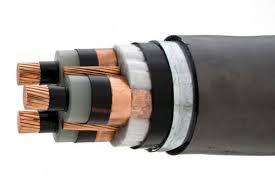In the realm of high-tension (HT) cable management, the quest for reliability and efficiency is perpetual. As the lifelines of electrical infrastructure, HT cables serve a critical function in powering our modern world. Yet, they are also susceptible to degradation over time, posing risks of downtime, safety hazards, and financial losses. Enter diagnostic testing – a pivotal tool revolutionizing how we approach the maintenance and management of HT cables.
Gone are the days of reactive maintenance, where failures were addressed after they occurred. The shift towards preventive maintenance strategies has been transformative, and at the forefront of this evolution lies diagnostic testing.
So, what exactly is diagnostic testing in the context of HT cable management? Put simply, it's the proactive assessment of cable health through a suite of advanced techniques and technologies. From partial discharge (PD) monitoring to thermal imaging, these methods allow engineers to detect early signs of deterioration, pinpoint potential faults, and take preemptive action before issues escalate.
One of the most significant benefits of diagnostic testing is its ability to extend the lifespan of HT cables. By identifying and rectifying problems in their nascent stages, utilities and operators can mitigate the effects of aging, prolonging the operational life of cables and optimizing asset utilization. This not only translates to cost savings but also enhances the reliability and resilience of electrical grids.
Moreover, diagnostic testing plays a crucial role in enhancing safety standards. The early detection of faults reduces the likelihood of catastrophic failures, minimizing the risk of accidents, injuries, and even fatalities. In industries where uninterrupted power supply is paramount, such as healthcare and manufacturing, the importance of preemptive maintenance cannot be overstated.
Furthermore, diagnostic testing contributes to sustainability efforts by promoting energy efficiency. By identifying and repairing faults that compromise cable performance, unnecessary energy losses can be mitigated, leading to reduced carbon emissions and overall environmental impact.
However, the journey towards effective HT cable management through diagnostic testing is not without its challenges. From technological complexities to data interpretation hurdles, there are obstacles to overcome. Yet, with advancements in machine learning and predictive analytics, the future of diagnostic testing appears promising. The integration of artificial intelligence promises to enhance the accuracy and efficiency of fault detection, further optimizing asset management strategies.
In conclusion, preventive power lies at the heart of effective HT cable management, and diagnostic testing serves as its cornerstone. By leveraging advanced techniques to anticipate and address potential issues, utilities and operators can uphold reliability, safety, and sustainability standards. As we continue to innovate and refine our approach to cable maintenance, the preventive paradigm will undoubtedly pave the way for a more resilient and efficient electrical infrastructure landscape.
Beyond the Surface: The Science behind Diagnostic Testing in HT Cable Maintenance
Does the Kyoritsu DC milliamp clamp meter measure a DC current with the help of a small jaw clamp?
